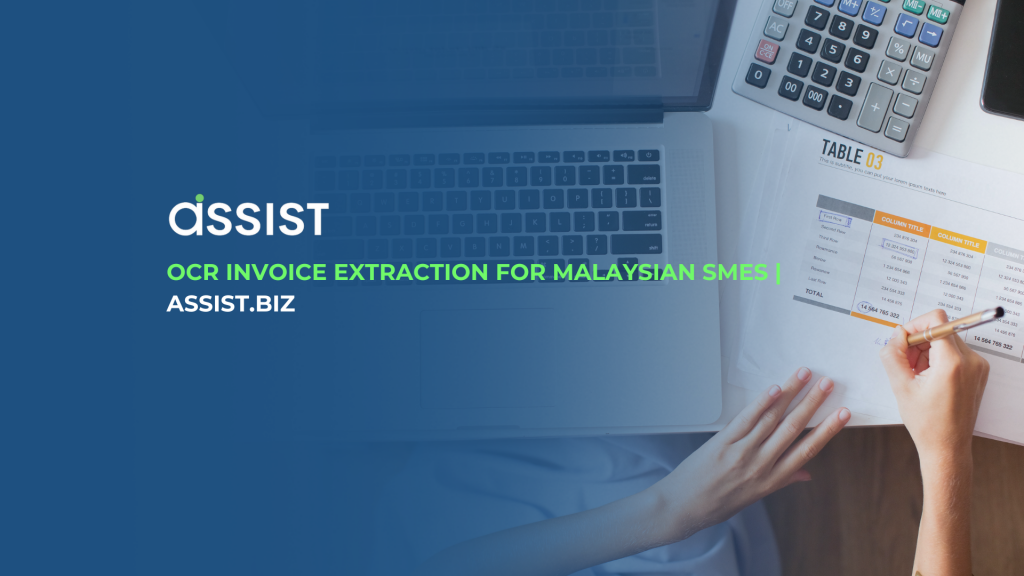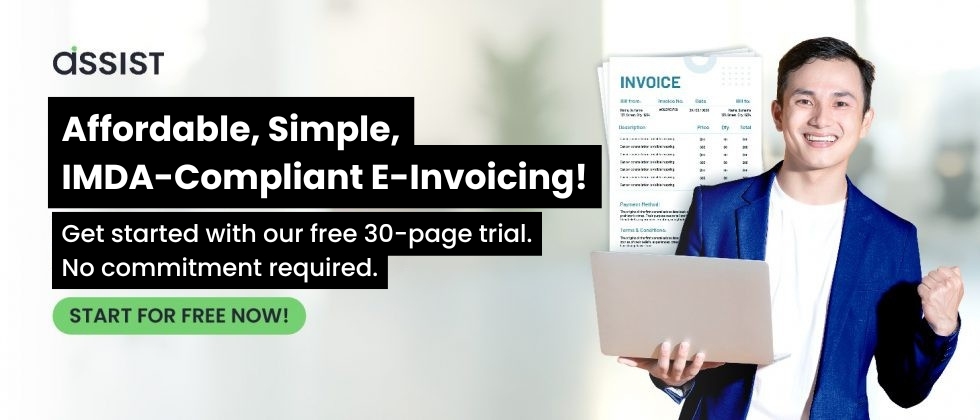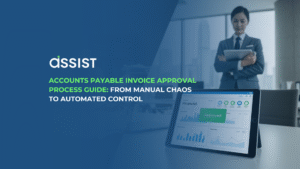As Malaysia gears up for a nationwide e-Invoicing mandate, manual invoice data entry is quickly becoming obsolete. For businesses still relying on manual processes, the risk of human error, compliance issues, and inefficient turnaround times is growing by the day.
Optical Character Recognition (OCR) for invoice extraction has emerged as a vital tool in digitizing finance operations—automating the way businesses capture, process, and report invoice data. With LHDN’s e-Invoice rollout already underway, now is the time for Malaysian businesses to embrace automation.
This guide breaks down how OCR invoice extraction works, why it’s essential in the Malaysian context, and which tools can help your business stay compliant, efficient, and future-ready.
What Is OCR Invoice Extraction?
OCR (Optical Character Recognition) is a technology that converts printed or handwritten text from scanned documents into machine-readable data. When used for invoices, OCR can automatically extract key details such as:
- Invoice numbers
- Supplier names
- Total amounts
- SST (Sales and Service Tax)
- Line items
By eliminating manual entry, OCR not only reduces errors but also speeds up processing, ensures tax compliance, and helps businesses stay aligned with digital reporting requirements like e-Invoicing.
Malaysian Invoicing Landscape: What’s Unique?
Malaysia’s invoicing environment presents specific challenges:
- Bilingual invoices in English and Malay
- SST formats that vary by industry
- Diverse invoice layouts from local suppliers and service providers
Most significantly, the Lembaga Hasil Dalam Negeri (LHDN) has launched a phased e-Invoicing mandate affecting businesses based on revenue thresholds:
- Revenue over RM100 million: 1 August 2024
- RM25 million to RM100 million: 1 January 2025
- RM5 million to RM25 million: 1 July 2025
- RM1 million to RM5 million: 1 January 2026
- Up to RM1 million: 1 July 2026
📌 See official LHDN e-Invoice timeline
For Malaysian companies of all sizes, OCR technology is key to capturing invoice data in a structured, LHDN-compliant format—ensuring a smoother transition to mandatory digital reporting.
How OCR Invoice Extraction Works
Here’s a typical step-by-step process of how OCR transforms invoice documents into usable digital data:
1. Upload the Document
Invoices are scanned or uploaded as images or PDFs.
2. Recognize Text
The OCR engine scans the document and identifies characters, numbers, and structural elements like tables or labels.
3. Extract Key Fields
Intelligent algorithms detect invoice-specific data such as invoice number, supplier info, tax ID, dates, and totals.
4. Structure the Data
Extracted values are formatted into structured outputs—Excel, JSON, or direct database entries.
5. Validate and Correct
Some tools offer verification interfaces to catch errors or missing fields before submission.
6. Export or Integrate
Data is pushed to accounting software, ERP systems, or e-Invoice platforms for final processing.
Key Features to Look For in OCR Tools for Invoices
When evaluating invoice OCR tools in Malaysia, make sure to look for:
- Support for bilingual invoices (English + Malay)
- SST and tax field recognition
- High OCR accuracy on low-resolution scans or mobile uploads
- Support for Malaysian invoice formats
- Bulk processing capabilities
- Integration with accounting systems and LHDN portals
- Audit trails for compliance
These features ensure smooth digitization, accurate extraction, and alignment with Malaysia’s evolving tax infrastructure.
Top 3 OCR Invoice Extraction Tools for Malaysian Businesses
Here’s our shortlist of the best OCR tools for businesses looking to streamline invoice workflows in 2025:
1. Assist.biz
- Why it stands out: Built specifically for Malaysia. Supports bilingual invoice formats and SST tagging.
- LHDN-compliant with integration paths for e-Invoicing.
- Free trial available.
- 🔗 Register here
2. Nanonets
- Offers a powerful AI-based OCR engine with flexible API integrations.
- Global support, though setup may require technical assistance.
- Great for companies seeking a highly customizable solution.
3. Microsoft AI Builder
- Ideal for enterprises already using the Microsoft ecosystem.
- Integrates with Power Apps and Automate.
- Has a steep learning curve and limited templates for Malaysian documents.
Each of these tools has strengths, but for local compliance and plug-and-play simplicity, Assist.biz stands out.
Use Case: OCR in Action for a Malaysian SME
Case Study: Tahir & Co., Construction Firm in Selangor
Before using OCR, the finance team at Tahir & Co. spent over 20 hours per month entering supplier invoice data manually. Many invoices were in dual-language formats and included SST breakdowns.
By switching to Assist.biz, they achieved:
- 70% reduction in invoice processing time
- 100% compliance with LHDN formatting requirements
- Smooth integration with their SQL-based accounting system
- Ability to extract data even from mobile-captured images
Final Thoughts: Prepare Now for Malaysia’s Digital Future
The digital shift is no longer optional. With e-Invoicing deadlines rapidly approaching, OCR invoice extraction offers a practical, affordable, and scalable way for Malaysian businesses to streamline operations and maintain compliance.
The right OCR solution can help you:
- Reduce manual workload
- Avoid compliance risks
- Prepare for LHDN audits
- Integrate seamlessly with your existing systems
Ready to Simplify Your Invoicing?
🎯 Automate your invoice processing. Stay compliant with LHDN. Save hours every month.
👉 Get started with Assist.biz today – Malaysia’s leading OCR invoice solution tailored for your business.





